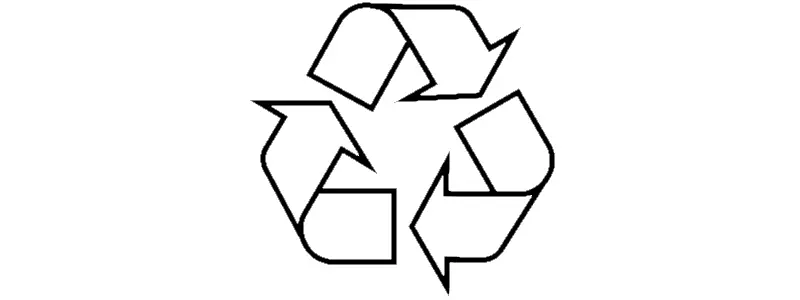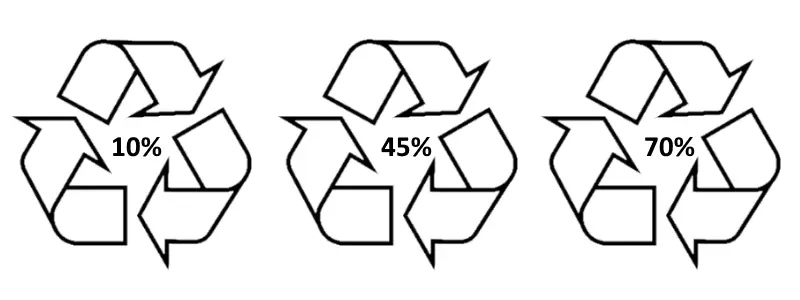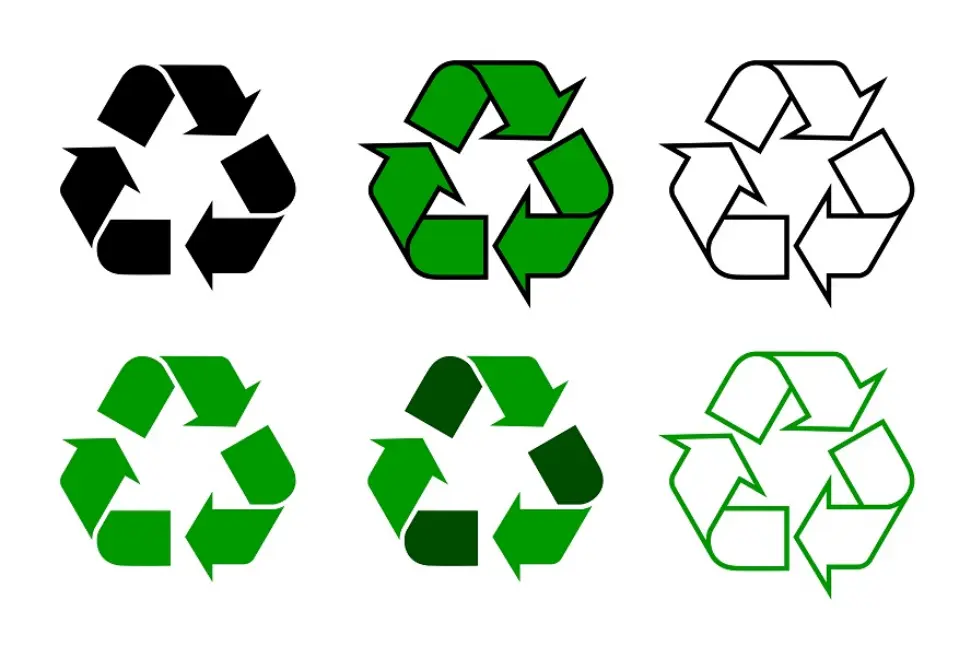You may recognise this symbol, but perhaps not by its official name. This is the Mobius loop, or as it's more commonly known 'the recycle symbol'. Often depicted in green or black, the symbol consists of three folded arrows in a continuous clockwise triangular loop.
History of the Mobius Loop Recycle Symbol
The name Mobius Loop comes from its indirect depiction of the mathematical discovery, Mobius Strip.
Gary Anderson, the creator of the design, used the Mobius Strip concept 'continuity in a finite entity' to reflect the recycling process. He adapted this by separating the loop into three chasing arrows. This was to represent 'reduce reuse recycle'.
At the time Anderson was studying architecture but had a developing interest in sustainability within the environment. He admitted that the idea didn't take more than a couple of days to come up with. As he had previously created an illustration for a presentation on recycling water waste, which then sparked the idea for this design. Drawing on previous experiences, environmental barriers and mathematical genius allowed Anderson to come up with the winning design.
The quest for a recycling symbol came at a time of increased awareness into environmental issues in the US. This coincided with Americas very first Earth Day in April 1970. The Container Corporation of America (CCA) at the time was the largest producer of recycled corrugated packaging in the states. They presented the competition to design a universal recycling symbol to students across America.
The CCA founder Walter Paepcke married together his successes in recyclable packaging with his keen eye for design trends, to come up with the competition. His intention was to use this new symbol on his recyclable products. This was to portray the integral role recycled paper played in their production. He encouraged other companies, with similar production methods, to also use the symbol on their products.
The design quickly grew in popularity and inevitably became public domain. This did however mean that its ability to be trademarked elapsed. The symbol would unavoidably fall into the hands of the plastics industry, who advanced the design to include numbers. This became the resin indication code system used today.
CCA did attempt to copy write the design. But The New York Environmental Group quashed any chances of approval, citing confusion to consumers after the symbols generous promotion during Earth Day.
Despite The New York Environmental Group's best efforts, confusion within consumer recycling is rife in today's society. Due to the symbol becoming public domain, it allowed for many editions of the original design. Products are now a wash with different recycling symbols and Mobius loop adaptations, each with varying messages.
It's interesting to consider whether Walter Paepcke and Gary Anderson would be proud or disconcerted in the trajectory their design has taken to this day.

When is a recycle symbol used?
The recycling symbol is used to represent an items capability of being recycled. However it does not mean the item will be accepted at all recycling facilities.
It suggests that the material does have the ability to be recycled; but only when done so at a specialised facility capable of doing so. But this is no guarantee that the item will be recycled.
Variations of the Mobius loop
A secondary representation of this symbol refers to whether the item is made from recycled materials. The difficulty here is that some counties do differ on their guidelines. In the UK it does not indicate an item is made from recycled materials, referenced on the recyclenow website. However in the US, the Federal Trade Commission guidelines state that this symbol can mean an item is made from 100% recyclable materials.
The recycle symbol can also be displayed with a number and percentage sign within it. This is used to indicate how much of the item is made from recycled materials.

Confusingly there is another adaptation to the symbol which has no relation to recycling. The plastics industry have adopted the use of the Mobius Loop and added their own twist to represent resin codes. A number from 1-7 is displayed within the triangle and sometimes will include an abbreviation of the resin name underneath.
Plastic resin codes:
- 1 - PET: Polyethylene Terephthalate
- 2 - HDPE: High Density Polyethylene
- 3 - PVC: Polyvinyl Chloride
- 4 - LDPE: Low Density Polyethylene
- 5 - PP: Polypropylene
- 6 - PS: Polystyrene
- 7 - Other Plastic
These symbols do not relay whether an item is recyclable. Simply what plastic resin the item is made from.
Recycle symbol misuse
It's important to be aware when looking at the recycle symbol on packaging. Many people look to purchase products that have packaging which is sustainable. But establishing whether said packaging is just that can be a minefield. Understanding the different variations in recycling symbols will help navigate you in the right direction when it comes to making your purchases. Be mindful that companies like to adorn packaging with multiple symbols to bamboozle consumers into purchasing their products. Don't get caught in this trap.
Conclusion
So... we have established that the recycling symbol maybe isn't as universal as we'd thought. But here are some great takeaways to help you navigate your way around the world of recycling. When the Mobius Loop recycling symbol is present on an item it means there is possibility for it to be recycled; however is not a guarantee it will be. If you see the symbol with a number and %, this means the item is made partially from recycled materials. But if you see the symbol with a single number inside the triangle, don't be fooled. This does not mean it is recyclable; but just a declaration of its resin code.
And lastly, it is advisable to contact your local authority and clarify the specific materials that are able to be collected and recycled at your local facility from you curb side collection.










